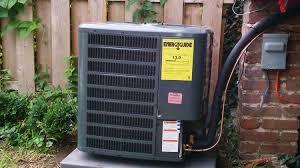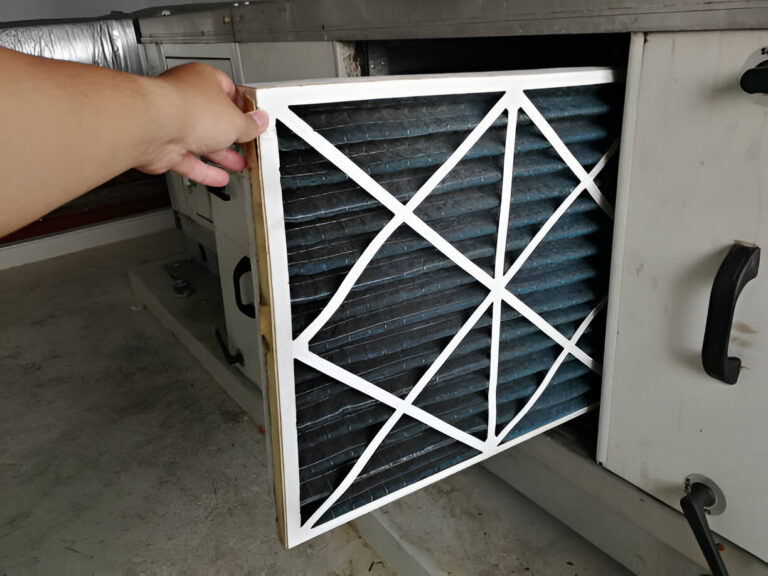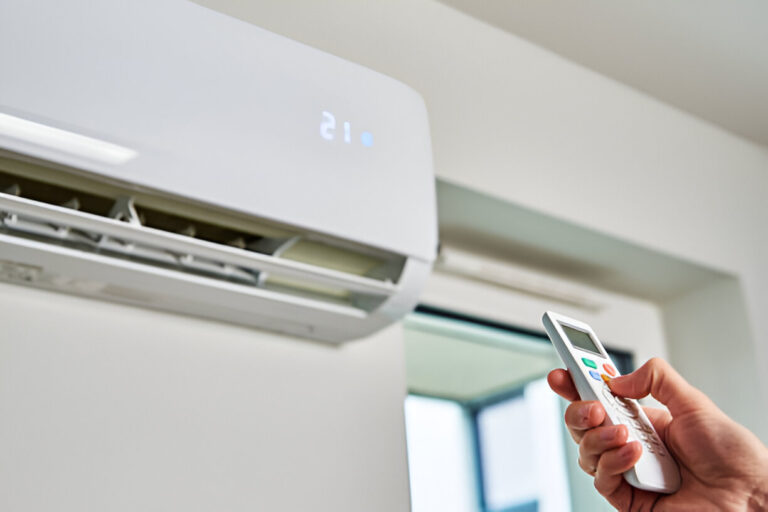Replacing a central air conditioning system is one of the most significant home improvement investments you’ll make. Whether your current system has broken down beyond repair or you’re looking to upgrade to a more efficient model, understanding the costs involved will help you make an informed decision. This comprehensive guide breaks down everything you need to know about central AC replacement costs, from baseline expenses to hidden fees, helping you budget effectively and choose the right system for your home.
Average Cost to Replace a Central Air Conditioner
The cost to replace a central AC system typically ranges between $4,500 and $12,000, depending on system size, brand, home layout, and installation complexity.
| System Type | Home Size (sq. ft.) | Unit Cost | Installation Cost | Total Replacement Cost |
| Basic 2-ton System | Up to 1,000 | $2,000 – $3,000 | $1,500 – $2,000 | $3,500 – $5,000 |
| Standard 3-ton System | 1,200 – 1,800 | $2,500 – $3,500 | $2,000 – $2,500 | $4,500 – $6,000 |
| High-Efficiency 4-ton | 1,800 – 2,400 | $3,500 – $5,000 | $2,500 – $3,000 | $6,000 – $8,000 |
| Premium 5-ton System | 2,500+ | $4,500 – $6,500 | $3,000 – $4,000 | $7,500 – $10,500 |
Key Factors That Influence Replacement Cost
Several variables can affect how much you’ll pay for a new central air conditioner:
- Size of the Unit: Larger homes need larger AC systems (measured in tons), which cost more.
- SEER Rating: Higher Seasonal Energy Efficiency Ratio (SEER) ratings cost more upfront but save energy long-term.
- Ductwork Condition: Old, leaky, or undersized ducts may need repairs or replacement.
- Home Size and Layout: More square footage or multi-story layouts may require more extensive installation.
- System Type: Split systems are more common and affordable; packaged systems or mini-splits may vary in price.
- Location & Labor Costs: Regional labor rates and local permitting can impact overall cost.

Repair vs. Replacement: Which Makes More Sense?
When your central air conditioner starts acting up, it’s natural to wonder: Should I repair it or just replace the whole system? Making the right call can save you thousands of dollars in the long run, so here’s how to decide.
When AC Repair Makes Sense
In many cases, repairing your system is the smart, cost-effective choice, especially if the issue is isolated or the unit still has years of life left.
Consider repairing if:
- The system is under 10 years old: Most central air conditioners have a lifespan of 12–20 years. If your unit is relatively new, repairing it can buy you several more efficient years.
- The issue is minor: Problems like a faulty capacitor, clogged drain line, bad thermostat, or worn-out fan motor are generally inexpensive to fix and don’t justify a full replacement.
- Repair costs are less than 30% of replacement: A good rule of thumb is: if repairs cost less than one-third of a new system, and the unit still has useful life, repairing makes more financial sense.
- The system is still energy-efficient: If your current AC has a good SEER rating (Seasonal Energy Efficiency Ratio) and isn’t causing a spike in utility bills, keep it going.
When AC Replacement Is the Better Option
If your air conditioner is older, less efficient, or constantly needing repairs, investing in a new system may be the smarter long-term solution.
Consider replacing if:
- The unit is 12–15+ years old: Most central air conditioners start to decline after 10–15 years, especially if they’ve been heavily used or poorly maintained.
- You’re seeing higher energy bills: Older systems tend to lose efficiency, especially if they use outdated technology. Newer models with higher SEER ratings can significantly lower monthly utility costs.
- You’ve had multiple recent repairs: If your AC needs frequent service—especially for major components like the compressor or evaporator coil, it may be more cost-effective to replace it altogether.
- It uses outdated refrigerant (R-22): Older units that rely on R-22 (Freon), which is now banned for production in the U.S., are more expensive to service and are no longer eco-friendly.
- You’re planning to stay in your home long-term: A new AC system increases home comfort, efficiency, and resale value. It also reduces the risk of breakdowns during peak summer heat.
How to Choose the Right Central AC System
Selecting the right system involves several considerations:
- Proper Sizing Have a professional perform a Manual J load calculation to determine the correct system size. This analysis considers your home’s square footage, insulation, windows, orientation, and local climate conditions.
- Efficiency Rating Choose a SEER rating based on your climate, usage patterns, and budget. In hot climates with high usage, higher SEER ratings provide better long-term value. In moderate climates, mid-range efficiency units often offer the best cost-to-benefit ratio.
- System Type Single-stage systems are the most affordable but provide less precise temperature control. Two-stage systems offer better efficiency and comfort, while variable-speed systems provide the highest efficiency and comfort but at a premium price.
- Brand Reputation Research manufacturer reliability, warranty terms, and local dealer support. Brands with strong local dealer networks typically provide better service and support.
- Warranty Coverage Compare warranty terms for parts and labor. Extended warranties can provide peace of mind but evaluate their cost against potential benefits.
Money-Saving Tips for Central AC Replacement
Several strategies can help reduce your replacement costs:
- Timing Your Purchase Schedule installation during off-peak seasons (spring and fall) when contractors are less busy and may offer better pricing. Avoid summer when demand and prices peak.
- Rebates and Incentives Research utility rebates, manufacturer promotions, and federal tax credits for high-efficiency systems. These incentives can save hundreds to thousands of dollars.
- Bundle Services Some contractors offer discounts for bundling AC replacement with other services like ductwork cleaning, insulation upgrades, or heating system maintenance.
- Energy Efficiency Financing Many utilities and manufacturers offer special financing for high-efficiency systems, sometimes with zero percent interest for qualified buyers.
- Regular Maintenance Proper maintenance extends system life and maintains efficiency. Consider service agreements that include regular tune-ups and priority service.
How to Choose the Right HVAC Partner for Long-Term Savings
Choosing the right HVAC company isn’t just about price, it’s about long-term value. A trustworthy contractor helps you save money not only during installation but also for years afterward.
Look for companies that:
- Offer clear, upfront pricing
- Focus on energy-efficient solutions
- Provide maintenance plans to extend system life
- Educate you instead of pushing unnecessary add-ons
For example, Team Fort Worth AC Repair may offer bundled HVAC tune-ups with duct cleaning to help you save on long-term maintenance costs. Choosing a provider that prioritizes education over upselling helps you get clean ducts, without getting taken for a ride.


